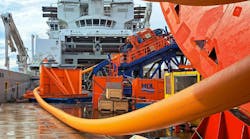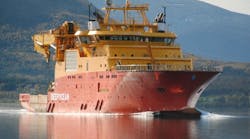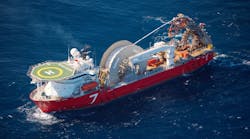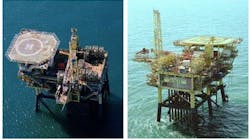Offshore staff
HOUSTON – Rigs at risk from drifting icebergs can expect an early warning following research by the Memorial University of Newfoundland in Canada. The Autonomous Ocean Systems Laboratory (AOSL) at the university is doing a long-term study into modeling the behavior of icebergs, which includes acquiring real-world data that can increase the accuracy of predicting the rate and direction of their drift.
The study is also finding ways to identify exceptionally deep icebergs that might drag across the seabed in shallow water and damage pipelines.
The current AOSL project will increase observational capabilities of the underwater environment in harsh ice-covered and iceberg-infested environments offshore eastern Canada and in theArctic. The range of real-time data gathered will be extensive as it identifies above and below water shapes of icebergs; maximum keel shape, depth and ocean surface current field; surface to bottom current profiles; and weather in the vicinity of icebergs.
Specially designed AUVs are being developed for the role. Fitted with ice-profiling sonar, they will stay with an iceberg for 28 days at a time gathering data on ice thickness and volume, as well as direction and drift.
To help evaluate systems planned for use on the unmanned autonomous vehicles, AOSL is using aSaab SeaeyeFalcon ROV as a development platform.
Neil Riggs, senior project manager at AOSL, says the Falcon is a valuable development tool for helping understand how various payloads will behave when attached to autonomous vehicle systems.
11/18/2014




